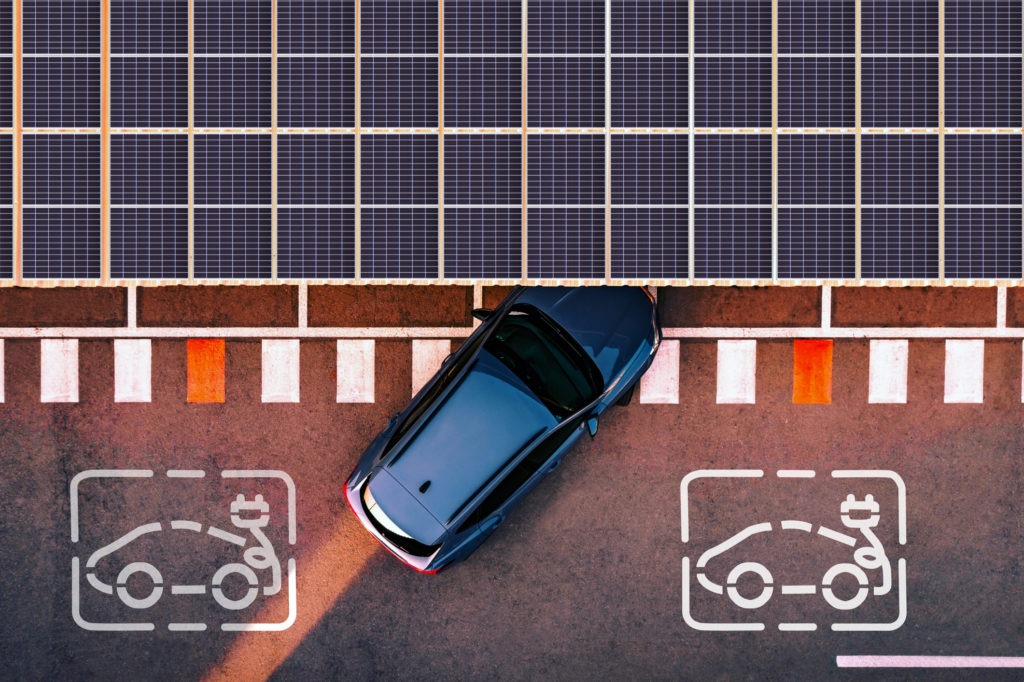The electric-vehicle charging conundrum facing Europe
01 September 2022

Major automotive markets across Europe are striving to improve their electric-vehicle (EV) infrastructure to boost sales of zero-emission vehicles. But for some, this is becoming an endless game of cat and mouse, where sales are not high enough to substantiate investment, but infrastructure is needed to improve uptake.
Across Europe (including the UK and EFTA), battery-electric vehicles (BEVs) increased their popularity in the first half of the year, making up 11.6% of all new-car registrations. This is up from a 7.6% share in the same period last year. Overall, the number of BEVs sold in H1 2022 was up 31.6% year on year.
This equates to 647,479 vehicles sold across the region between January and June. According to the European Automobile Manufacturers’ Association (ACEA), at the end of 2020, BEVs made up 0.5% of the European Union’s car parc. This number will have likely increased due to high registration volumes in 2021 and 2022.
Yet EV infrastructure is not matching this pace, meaning there could soon be a divide between countries with a well-developed electricity grid and charging network, and those without. As the EU Commission seeks to end the sale of all new non-zero-emission vehicles by 2035, the issue of infrastructure will be a big talking point.
Charging domination in just two countries
In June 2022, ACEA published findings highlighting the problem. Half of the bloc’s public EV charging points are located in just two countries: the Netherlands (29.4% of chargers) and Germany (19.4%). These nations make up just 10% of the EU’s land mass, meaning the remaining 90% has to share 51.2% of the current charging infrastructure.
The gap between rankings in ACEA’s findings are huge, with the Netherlands having 1,600 times more charging points than the country with the poorest infrastructure, Cyprus. In fact, the Dutch have more chargers than 23 other member states combined.
There is also a clear split between central and eastern European countries, and western Europe. Romania, for example, is six times larger than the Netherlands in terms of land-mass, but has only 0.4% of Europe’s charging network.
‘Currently, there are around 3,000 charging stations in Romania, serving around 14,000 BEVs,’ commented Ulmis Horchidan, chief editor at Eurotax in Romania (part of Autovista Group). ‘However, the Environment Ministry has a plan to build an additional 15,000 charging stations in the next four to five years.’
While growth of BEVs in Romania may seem impressive, with a 410.3% increase in H1 2022 over the previous year according to ACEA, Horchidan cautions that the picture looks different when compared with other fuel types.
‘For each new vehicle sold locally, of any fuel type, there are three used-car imports each month,’ he added. ‘Additionally, almost all new BEVs were purchased using one of the biggest incentives available across the EU, worth €10,000. This accelerated their registrations but they will likely slow.’
Romania is also second-to-last in terms of the EU average car-parc age, at 16.9 years. It is therefore clear that drivers hold onto their cars for longer, meaning the BEV market has a long way to go to achieve the popularity needed to justify further infrastructure investment. According to ACEA, at the end of 2020, BEVs made up just 0.1% of the country’s parc.
Growth continues across the continent
Not all the smaller automotive markets are suffering when it comes to charging infrastructure. Austria has a vehicle parc around two million units smaller than Romania. But it is ranked fifth in Europe when it comes to charging-point density compared with number of inhabitants, and seventh in terms of infrastructure versus area.
‘Currently, there are around 14,000 charging points in Austria, operated by around 350 different suppliers,’ said Robert Madas, Eurotax (part of Autovista Group) regional head of valuations, Austria, Poland, and Switzerland. ‘BEVs have a market share of around 13.6% of new-car registrations, while there are 93,811 on the country’s roads, making up 1.8% of all passenger cars.’
While this may seem like an imbalance, the density due to Austria’s land mass means drivers are never far away from a charging point, even if availability is likely to be questionable as BEV sales increase.
‘I think that the infrastructure is currently at a good level,’ added Madas. ‘However, with an increasing EV market share, it might become tighter in the future if the pace of setting up new charging stations does not follow.’
More EV-charging investment necessary
ACEA believes that around 6.8 million public charging points will be required by 2030 as EU countries push forward with zero-emission vehicle strategies, and carmakers continue to switch away from internal-combustion engine (ICE) models.
However, as the number of charging points increases, as it has done by 180% over the last five years, the total number of 307,000 falls short of what is required. Reaching the required level will mean 22-fold increase in the number of chargers installed per year.
The Alternative Fuels Infrastructure Regulation (AFIR) – proposed by the European Commission last year – is meant to help address the situation. However, ACEA claims its level of ambition is completely insufficient.
AFIR states that for every light-duty BEV, either passenger car or light-commercial vehicle, sold in a country, 1kW of public charging infrastructure needs to be provided, with 0.66kW for every plug-in hybrid (PHEV) sold.
Additionally, along the continent’s TEN-T core network of roads, publicly-accessible charging pools need to be established every 60km, offering a power output of at least 300kW and including at least one individual point with a 150kW charger. By 2030, the total power output of these pools must double to 600kW, with a minimum of two 150kW chargers.
‘While some countries are powering ahead when it comes to infrastructure rollout, the majority are lagging behind,’ former ACEA Director General, Eric-Mark Huitema stated. ‘The stark disparities demonstrate the need for strong AFIR targets that are harmonised across all EU member states.’
‘We urge policy makers to reinforce AFIR so that it can achieve the aim of building up a dense European network of charging stations, spanning from north to south and east to west,’ he added.
Charging infrastructure has the potential to make or break the battery-electric vehicle market. Should a country struggle to install enough chargers, drivers may be dissuaded from buying a BEV, especially those without off-street parking and unable to install a domestic point.
With the EU banning sales of new petrol, diesel, and hybrid models by 2035, there needs to be a strong network in place across the continent to ensure confidence in the technology. Otherwise sales could stall as drivers turn instead to the used-car market for petrol and diesel models. Therefore, the time to secure investment is starting to run out, with an increase in charging-point installations necessary now to meet expected requirements.



